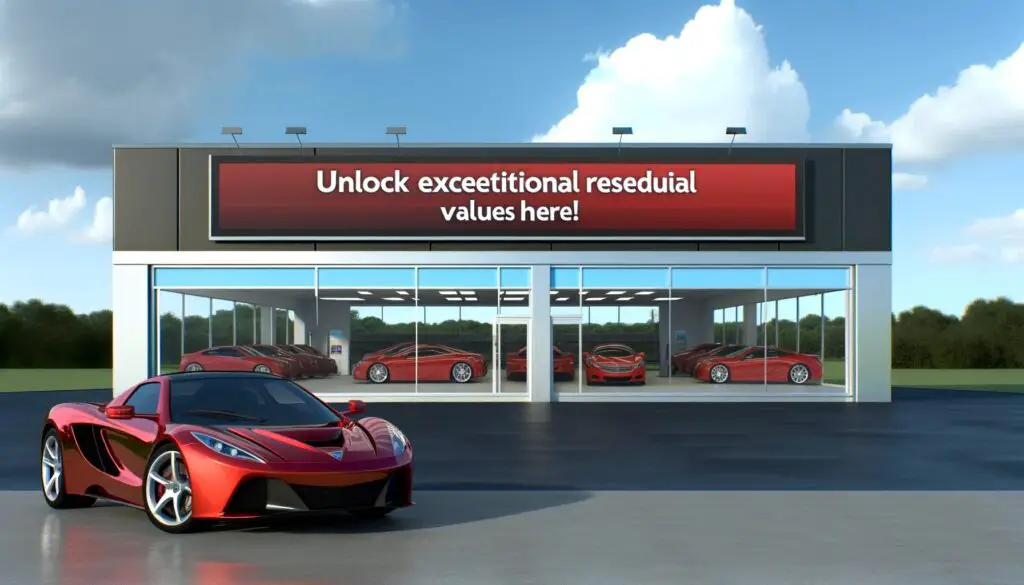In the realm of personal finance and wealth-building, Dave Ramsey’s “Free Cars for Life” concept stands as a beacon of financial wisdom. This comprehensive guide will delve into the intricacies of this innovative approach to car ownership, shedding light on its key aspects, benefits, challenges, and considerations. By the end of this article, you’ll not only grasp the essence of Ramsey’s concept but also be well-equipped to make an informed decision regarding your own financial journey.
I. Introduction
A. A Brief Overview of Dave Ramsey’s “Free Cars for Life” Concept
Dave Ramsey, a renowned financial expert and radio host, introduced the “Free Cars for Life” concept as part of his broader financial education program. This concept challenges conventional wisdom by advocating for a debt-free approach to car ownership, emphasizing the importance of saving, investing, and ultimately achieving financial freedom in this aspect of life.
B. Importance of Financial Freedom in Car Ownership
The significance of attaining financial freedom in car ownership cannot be overstated. For many individuals and families, cars represent a significant portion of their monthly expenses. By adopting Ramsey’s concept, you can redirect the money previously allocated to car payments and interest towards wealth-building endeavors, such as investments or debt reduction.
II. Key Aspects of Dave Ramsey’s Concept
III. Benefits of the “Free Cars for Life” Concept
A. Saving Money on Interest: Calculating the Interest Saved Over Time
One of the central advantages of adopting Dave Ramsey’s concept is the substantial savings on interest payments. When individuals choose to finance their cars through loans, they inevitably incur interest charges over the life of the loan. These interest payments can accumulate significantly, making the overall cost of the car much higher than its original price.
By opting for Ramsey’s approach of saving money to purchase a car outright, you completely eliminate the need for car loans and, consequently, the associated interest expenses. The long-term financial impact of this decision cannot be understated. Let’s delve into how you can calculate the interest saved over time:
- Determine the Loan Interest Rate: Begin by identifying the typical interest rate for car loans in your region. This rate varies depending on factors like credit history and loan duration.
- Estimate the Total Cost of the Car: Calculate the total cost of the car, including interest, if you were to finance it with a loan. This can be done using online loan calculators or by consulting with financial institutions.
- Calculate the Cumulative Interest Saved: Now, compare this total cost with the amount you would pay to purchase the same car outright. The difference represents the cumulative interest saved over the years.
The results often reveal that individuals who follow Ramsey’s approach can save thousands of dollars in interest payments, making it a financially savvy choice for long-term car ownership.
B. Building Wealth Through Investments: Potential for Substantial Growth
One of the most compelling aspects of the “Free Cars for Life” concept is its potential to catapult your financial future. When you redirect the money previously allocated to car payments into investments, you open the door to substantial wealth-building opportunities.
Here’s why this is so powerful:
- The Power of Compounding: Investing your money allows it to grow over time through the magic of compound interest. The returns you earn on your investments can generate additional earnings, and this cycle continues to snowball, potentially leading to exponential growth.
- Long-term Financial Security: By consistently investing the equivalent of your former car payments, you create a financial safety net that can protect you during unexpected circumstances. This safety net can help you weather financial storms, cover emergencies, or even retire comfortably earlier than expected.
- Early Retirement Possibility: For those with long-term financial goals, such as early retirement, the “Free Cars for Life” concept offers a viable path. The substantial growth of your investments can enable you to reach your retirement objectives sooner than you might have imagined.
By embracing this concept and diligently investing, you are effectively harnessing the power of your money to secure your financial future and achieve long-term financial prosperity.
C. Greater Control Over Car Choices: Freedom in Vehicle Selection
Another key benefit of the “Free Cars for Life” concept is the newfound freedom and flexibility it grants you when it comes to choosing your vehicles. Traditional car loans often come with restrictions, dictating the make, model, and age of the car you can purchase. In contrast, Ramsey’s approach liberates you from these constraints.
With the financial stability gained from saving and investing, you regain control over your car choices. This means:
- Choosing Based on Preferences: You can select vehicles that align with your personal preferences, whether you prefer a certain brand, model, or features.
- Fulfilling Your Needs: You have the freedom to choose cars that meet your specific needs. Whether it’s a family-friendly SUV, a fuel-efficient compact car, or a sporty convertible, the choice is yours.
- Upgrading When You Want: As your financial situation improves, you can upgrade your vehicles without the need for new loans. This flexibility allows you to adapt your car choices to evolving circumstances.
In essence, the “Free Cars for Life” concept not only frees you from the financial burdens of car loans but also empowers you to make car choices that suit your lifestyle, preferences, and needs, enhancing your overall quality of life.
IV. Challenges and Considerations
A. Requires Initial Savings: Overcoming Financial Barriers
One of the primary challenges individuals face when embracing Ramsey’s concept is the need for initial savings to purchase a reliable used car outright. Overcoming this financial barrier may require some adjustments to your budget and the development of disciplined saving habits.
- Budget Adjustments: To accumulate the necessary savings, you may need to make adjustments to your current spending habits. This could involve cutting back on discretionary expenses, finding cost-effective alternatives, or reevaluating your financial priorities.
- Creating a Savings Plan: Establish a clear and achievable savings plan. Determine how much you need to save and set realistic milestones. Having a structured plan in place can help you stay on track and motivated.
- Automate Savings: Consider automating your savings by setting up automatic transfers from your checking account to your dedicated car fund. This ensures consistent contributions and minimizes the temptation to spend the money earmarked for your car.
- Patience and Persistence: Recognize that building up the initial savings may take time. Patience and persistence are key attributes in this journey. Stay committed to your goal, even when faced with short-term financial constraints.
B. Market Risk: Understanding Investment Uncertainties
Investing the equivalent of your former car payments into various financial instruments comes with inherent market risks. It’s essential to comprehend these uncertainties and have a diversified investment strategy in place to mitigate potential losses.
- Market Volatility: Financial markets can be unpredictable, and the value of investments can fluctuate. Understanding that market volatility is a natural part of investing is crucial to maintaining a long-term perspective.
- Diversification: Mitigate risk by diversifying your investment portfolio. Spread your investments across different asset classes, such as stocks, bonds, and real estate. Diversification can help reduce the impact of market fluctuations on your overall portfolio.
- Risk Tolerance: Assess your risk tolerance honestly. Your ability to tolerate risk will influence your investment choices. Conservative investors may opt for safer, lower-risk options, while those comfortable with more risk may pursue potentially higher returns.
- Financial Advisor Guidance: Consider seeking guidance from a financial advisor who can help you tailor your investment strategy to align with your risk tolerance and long-term financial goals.
C. Discipline and Commitment: Sticking to the Plan
Implementing Dave Ramsey’s concept successfully hinges on unwavering discipline and commitment to the plan. Staying focused on your financial goals and resisting the temptation to revert to old spending habits is crucial.
- Goal Setting: Clearly define your financial goals and the reasons behind your decision to adopt this concept. Having a compelling reason or vision for your financial future can boost your commitment.
- Accountability: Share your goals with a trusted friend or family member who can hold you accountable. Accountability partners can provide support and encouragement when facing challenges.
- Regular Review: Periodically review your progress and adjust your plan as needed. Life circumstances may change, and your financial goals may evolve. Flexibility in your approach can help you stay committed over the long term.
- Educate Yourself: Continuously educate yourself about personal finance and investments. Understanding the principles behind Ramsey’s concept and the benefits it offers can reinforce your commitment.
D. Criticisms and Alternatives: Addressing Opposing Viewpoints
While Dave Ramsey’s “Free Cars for Life” concept has gained widespread acclaim, it’s important to acknowledge that there are criticisms and alternative viewpoints. Each individual’s financial situation is unique, and it’s crucial to consider these perspectives and adapt the concept to your specific circumstances if necessary.
- Criticism Assessment: Evaluate the criticisms and alternative viewpoints objectively. Some individuals may argue that car loans can be advantageous in certain situations, such as low-interest rates or financing incentives.
- Tailoring the Concept: Recognize that Ramsey’s concept can be tailored to suit your financial needs. You don’t have to follow it rigidly; instead, you can adapt it to align with your unique goals and preferences.
- Professional Advice: Consider consulting with a financial advisor who can provide personalized guidance based on your financial situation. They can help you weigh the pros and cons of Ramsey’s concept against other financial strategies.
In conclusion, while Dave Ramsey’s “Free Cars for Life” concept offers a compelling path to financial freedom in car ownership, it’s essential to be aware of the challenges and criticisms it may entail. By addressing these considerations and staying committed to your financial goals, you can make informed decisions that best suit your individual circumstances.
V. Evaluating Your Suitability
A. Assessing Your Current Financial Situation
Before embarking on the journey towards financial freedom in car ownership, it’s essential to thoroughly assess your current financial situation. This step involves a comprehensive analysis of your income, expenses, and debt levels to determine if Ramsey’s concept is a suitable fit.
- Income Evaluation: Begin by documenting your monthly income from all sources, including salaries, bonuses, investments, and any other sources of revenue.
- Expense Breakdown: Create a detailed list of your monthly expenses. Categorize them into fixed (e.g., rent/mortgage, utilities) and variable (e.g., groceries, entertainment) expenses.
- Debt Assessment: Review your outstanding debts, such as credit card balances, student loans, and other loans. Understand your current debt obligations and their impact on your financial flexibility.
- Emergency Fund: Assess whether you have an emergency fund in place. An emergency fund can provide a financial safety net in case of unexpected expenses or emergencies.
- Savings and Investments: Evaluate your existing savings and investment accounts. Understand your current asset allocation and how they align with your long-term financial goals.
B. Understanding Risk Tolerance and Financial Goals
Once you’ve assessed your financial situation, it’s crucial to consider your risk tolerance and define your long-term financial goals. These factors play a pivotal role in tailoring the “Free Cars for Life” concept to your unique circumstances.
- Risk Tolerance Assessment: Determine your risk tolerance by evaluating how comfortable you are with the potential fluctuations in your investment portfolio. Are you risk-averse and prefer safer, low-risk investments, or are you willing to take on more risk for the potential of higher returns?
- Long-Term Financial Goals: Clearly define your long-term financial goals. These could include retirement planning, saving for a home, funding your children’s education, or achieving financial independence. Understanding your goals will guide your financial decisions.
- Alignment with Risk and Goals: Evaluate whether Dave Ramsey’s concept aligns with your risk tolerance and financial goals. For instance, if your goal is early retirement and you have a higher risk tolerance, Ramsey’s approach may be particularly appealing as it can accelerate wealth accumulation.
- Flexibility: Recognize that financial goals and risk tolerance can change over time. Ensure that the chosen approach, whether Ramsey’s concept or an alternative, offers flexibility to adapt to evolving financial circumstances and goals.
C. Considering Alternative Approaches to Car Ownership
Dave Ramsey’s concept may not be a one-size-fits-all solution for everyone. If, after careful evaluation, you find that it doesn’t align with your current financial circumstances or preferences, it’s worth considering alternative approaches to car ownership:
- Leasing: Leasing a car can be an option if you prioritize driving a newer vehicle with the latest features. However, it’s important to understand the terms, costs, and limitations associated with leasing agreements.
- Carpooling and Ridesharing: If you live in an urban area with robust public transportation or ridesharing services, you might explore carpooling or ridesharing as alternatives to car ownership. This can reduce your monthly transportation expenses.
- Hybrid Approaches: You can also consider hybrid approaches, such as saving for a used car while also investing in other financial goals. This provides a balance between immediate transportation needs and long-term financial objectives.
Ultimately, the suitability of Dave Ramsey’s “Free Cars for Life” concept depends on your unique financial situation, goals, and risk tolerance. By conducting a thorough assessment and considering alternatives, you can make an informed decision that aligns with your financial journey.
VI. Frequently Asked Questions (FAQs)
VII. Success Stories
VIII. Conclusion
In summary, Dave Ramsey’s “Free Cars for Life” concept serves as a powerful blueprint for attaining financial freedom in car ownership. This approach, rooted in savings, investments, and prudent financial choices, offers a transformative path towards a brighter financial future.
By recapitulating the key aspects of the concept, we’ve explored how it shifts the focus from car loans to financial independence. Through dedicated saving, wise investments, and disciplined financial habits, individuals can break free from the cycle of car payments and debt.
It’s important to emphasize that making an informed decision regarding your financial future is paramount. Ramsey’s concept provides a valuable framework, but each individual’s circumstances are unique. Therefore, consider your financial goals, risk tolerance, and long-term aspirations when determining if this concept aligns with your path to financial security.
In closing, I encourage you to take action based on your specific circumstances. Whether you choose to fully embrace Dave Ramsey’s concept or adapt it to suit your needs, the journey towards financial freedom in car ownership begins with a deliberate step. By prioritizing savings, investments, and financial discipline, you can pave the way for a more secure and prosperous future.
IX. Additional Resources
A. Official Resources and Tools by Dave Ramsey
Explore Dave Ramsey’s official website for a plethora of resources and tools to help you on your financial journey:
- Dave Ramsey’s Official Website: Access articles, budgeting tools, and financial resources directly from Dave Ramsey himself.
- Financial Peace University: Consider enrolling in Financial Peace University, a comprehensive program that provides in-depth financial education and practical strategies to take control of your money.
- EveryDollar Budgeting Tool: Utilize the EveryDollar budgeting tool, designed to assist you in creating and managing your budget effectively.
B. Recommended Books, Podcasts, and Courses
Enhance your financial literacy with these recommended books, podcasts, and courses:
Books:
- “The Total Money Makeover” by Dave Ramsey: Delve into Dave Ramsey’s flagship book, which outlines his step-by-step plan for achieving financial freedom.
- “Rich Dad Poor Dad” by Robert Kiyosaki: Explore the financial philosophies and principles presented in this renowned book, offering insights into building wealth.
Podcasts:
- The Dave Ramsey Show: Tune in to Dave Ramsey’s podcast, where he offers financial advice, answers listener questions, and shares success stories.
- ChooseFI Podcast: This podcast explores the path to financial independence through the experiences of real people who have achieved it.
Courses:
- Investing Foundations: Take advantage of Investopedia’s free course on investing fundamentals, which covers key concepts to help you make informed investment decisions.
- Coursera Financial Planning Specialization: Enroll in this Coursera specialization to gain a comprehensive understanding of financial planning and investment strategies.
C. Financial Calculators
Empower yourself with these financial calculators to estimate potential savings and investment growth:
- Compound Interest Calculator: Calculate how your investments can grow over time with compound interest.
- Retirement Calculator: Estimate your future retirement savings based on your current contributions and investment returns.
- Car Loan Calculator: Determine the cost of car loans and how they impact your budget over time.
These resources and tools provide valuable insights and practical assistance to help you make informed financial decisions, whether you’re embarking on the “Free Cars for Life” concept or seeking to enhance your overall financial literacy and success.





